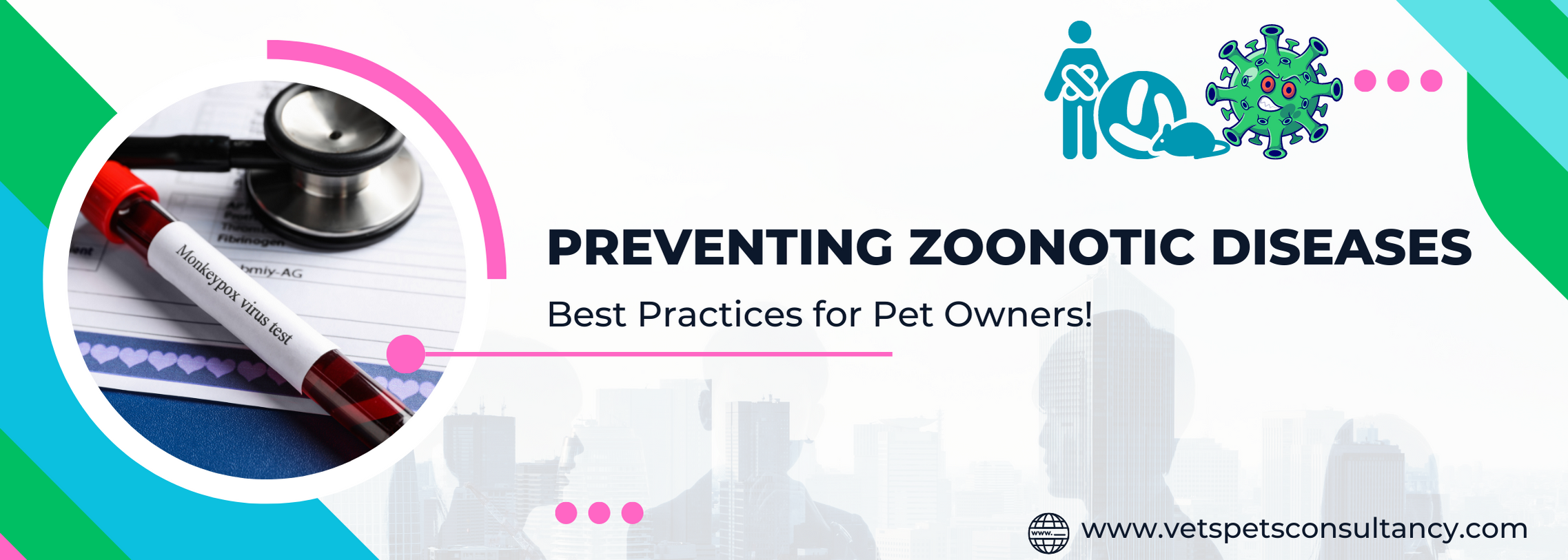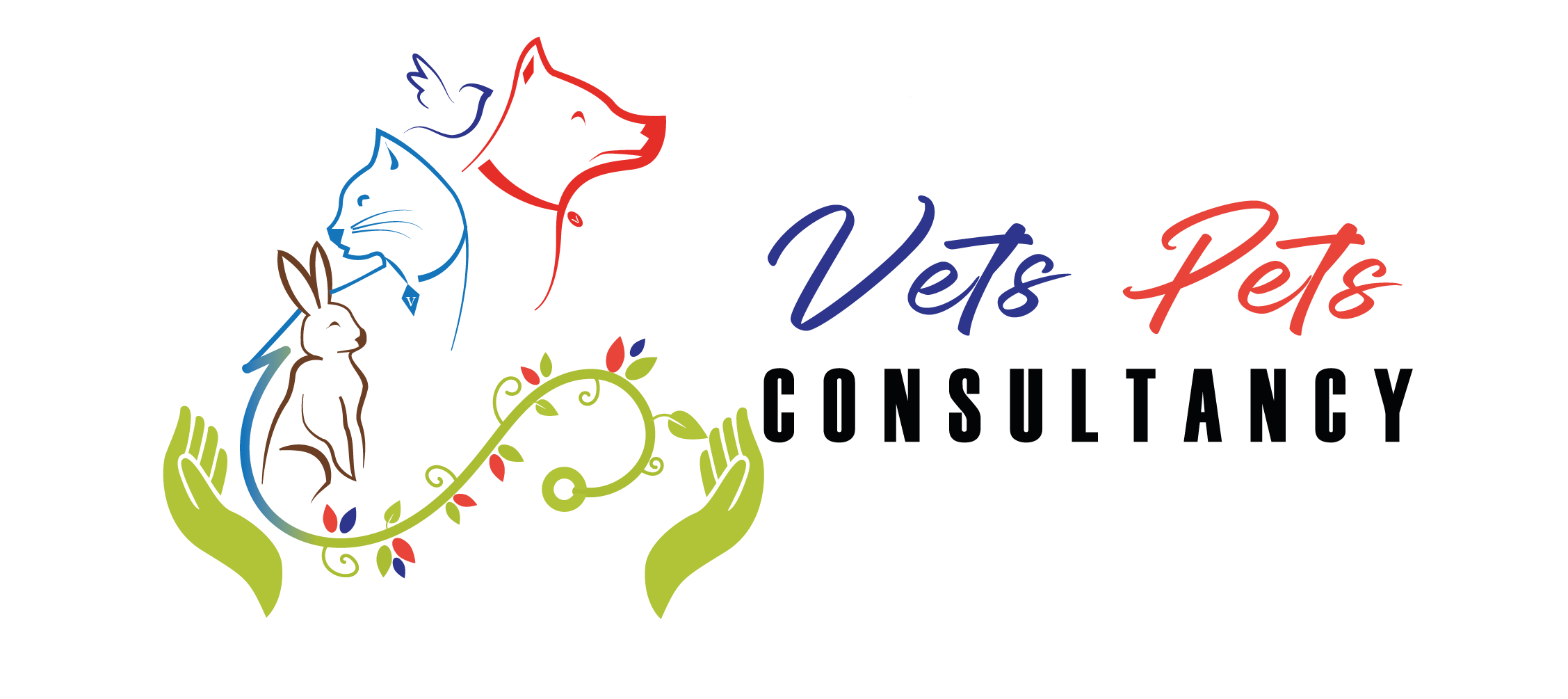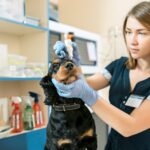
It was a cool morning with fresh air and calmness in the evening. Everyone was connecting dots at work to get things done before they left for home. Suddenly, a flash news bulletin gave everyone goosebumps. “The First Case of Covid’19 showed up in the city of Wuhan in Hubei province, China”. The news reported that Chinese authorities had identified at least 266 people who contracted the virus last year and came under medical surveillance before announcing the emergence of this virus in front of the world. That is when the concept of Zoonotic Diseases was revived and focused upon.
Zoonotic diseases are infectious diseases that can be transmitted between animals and humans. These diseases are caused by pathogens such as bacteria, viruses, parasites, and fungi. Zoonotic diseases are significant because they have the potential to cause illness in both animals and humans, posing a threat to public health.
Rahman, M. T., Sobur, M. A., Islam, M. S., Ievy, S., Hossain, M. J., El Zowalaty, M. E., … & Ashour, H. M. (2020). Zoonotic diseases: etiology, impact, and control. Microorganisms, 8(9), 1405.
Transmission of Zoonotic Diseases:
The Transmission of zoonotic diseases can occur through direct and indirect contact. It depends on the virus or bacterial mode of action.
– Direct Transmission includes contact with infected animals or their bodily fluids, such as saliva, urine, feces, or blood.
– Indirect Transmission can also occur through contaminated environments, food, water, or vectors like ticks and fleas.
Importance of prevention for both pets and humans:
It is said, “A stitch in time saves nine.” We need to continuously revive, raise awareness, and work to prevent more significant losses caused by zoonotic diseases. Like what happened in previous pandemics, endemics, and epidemics. As the Human-Animal Relationship is since the ages, there is a dire need to keep a check and balance in preventive measures against zoonotic infections. Prevention is crucial to mitigate the risks associated with zoonotic diseases for pets and humans. By implementing preventive measures, we can reduce the incidence of these diseases and protect the health of animals and humans. Prevention is especially significant in the following ways:
- Protecting human health: Zoonotic diseases can cause mild to severe illnesses in humans, ranging from flu-like symptoms to more severe conditions. Some zoonotic diseases, such as rabies or leptospirosis, can be fatal. Some Zoonotic Diseases can lead to Pandemics, like Covid19 that lasted long and made the World Health Organization ring the Pandemic Bell. Meanwhile, some zoonotic diseases can be silent, like toxoplasmosis causing silent abortions in females. Hence, by preventing zoonotic diseases, we safeguard human health and prevent potential outbreaks.
- Safeguarding animal welfare: Animals can also suffer from zoonotic diseases, leading to illness, discomfort, or even death. By taking preventive measures, we ensure our pets’ and other animals’ well-being and longevity. Thus, safeguarding Human-Animal Bond.
- One Health approach: The concept of One Health recognizes the interconnectedness of human, animal, and environmental health. Preventing zoonotic diseases aligns with the One Health approach, as it considers the well-being of all ecosystem components. Hence, if the balance in one territory will be lost, it will automatically renounce the other, causing rebellion in the universe.
A Brief overview of zoonotic diseases commonly transmitted from pets:
Pets transmit several zoonotic diseases to humans and vice versa. Some common examples include:
- Rabies: Transmitted through bites or scratches from infected animals, particularly dogs, cats, and wildlife. Rabies is a viral disease that affects the nervous system and can be fatal if left untreated.
- Leptospirosis: Caused by the Leptospira bacteria found in the urine of infected animals, including rodents, dogs, and livestock. Humans can contract the disease through contact with contaminated water or soil.
- Toxoplasmosis: Caused by the Toxoplasma parasite found in the feces of infected cats. Although it usually poses a greater risk to pregnant women and individuals with weakened immune systems, toxoplasmosis can also affect healthy individuals.
- Ringworm: A fungal infection that can be transmitted from infected animals, such as dogs and cats, to humans through direct contact or contaminated objects. It causes circular rashes on the skin and can be treated with antifungal medication.
- Salmonellosis: Caused by the Salmonella bacteria, which can be present in the feces of infected animals. Transmission occurs through contact with contaminated surfaces, food, or water. Proper hygiene and food handling practices are important in preventing salmonellosis.
- Toxoplasmosis: Toxoplasma parasite can be transmitted to humans through cats as the major carrier. They become infected by eating infected rodents, birds, or other small animals. The parasite is then passed into the cat’s feces. While humans deal with feces, it can be transmitted to humans through contaminated feces, contaminated soil, and water. Moreover, it can cause abortion or complications in pregnant females.
Which Preventive Measures to follow to avoid Zoonotic Diseases Prevalence?
Preventing zoonotic diseases involves taking proactive measures to reduce the risk of transmission between animals and humans. If you are a pet owner, to prevent zoonotic diseases, you need to follow these essential steps:
- Good Hygiene Practices:
- Wash hands thoroughly with soap and water after handling pets and their bedding or cleaning up after them.
- Use hand sanitizers when soap and water are not readily available.
- Avoid touching your face, especially your eyes, nose, and mouth, after interacting with pets.
- Try wearing gloves and masks while handling pets’ feces or changing their bedding to avoid getting infected.
2. Regular Veterinary Care:
- Schedule regular check-ups and vaccinations for your pets to prevent and detect any underlying diseases.
- Follow the recommended vaccination schedules provided by your veterinarian to protect your pets and reduce the risk of zoonotic diseases.
3. Parasite Control:
- Use appropriate parasite control methods, including flea/tick preventives.
- Do regular deworming, as your veterinarian advises.
- Regularly check your pets for fleas, ticks, or other parasites.
- Promptly address any infestations.
4. Proper Handling and Waste Disposal:
- Use proper techniques when handling pets, especially after they have been outdoors or in contact with wildlife or other potentially infected animals.
- Dispose of pet waste promptly and hygienically, following local regulations.
5. Food Safety:
- Practice safe food handling when preparing pet food. Ensure the food is stored and handled separately from human food.
- Use appropriate food storage containers.
- Regularly wash pet food bowls and utensils.
- Make sure to give boiled food to your pets (If you are using Homemade food).
- Avoid giving them raw meat, milk, etc.
6. Environmental Cleaning:
- Maintain a clean living environment for your pets by regularly cleaning their bedding, toys, and living areas.
- Use pet-friendly disinfectants or cleaning agents to eliminate potential pathogens.
7. Educate Yourself:
- Stay informed about zoonotic diseases, their symptoms, and their associated risks.
- Follow reliable sources of information, such as veterinary professionals, public health agencies, and reputable websites.
8. Teach Children about Proper Pet Interaction:
- Educate children about proper hygiene practices when interacting with pets.
- Teach them to avoid rough handling, face-to-face contact, and kissing pets to minimize the risk of disease transmission.
9. Awareness of High-Risk Activities:
- Be aware of activities that may pose a higher risk of zoonotic disease transmission, such as handling reptiles, amphibians, or wildlife.
- Take extra precautions, such as using gloves or avoiding direct contact, when engaging in these activities.
Pet owners can significantly reduce the risk of zoonotic disease transmission between their pets and themselves by using above mentioned precautionary measures.
Remember Zoonotic Diseases Needs to Be Prevented, more than Treated!












Курс перманентного макияжа с нуля: от новичка до профессионала
курсы перманентного макияжа спб https://www.unopmu11.ru.
Лучшие вакансии для вас: кадровое агентство
помощь в подборе персонала https://www.heaad11.ru/.
Индивидуалки и проститутки Москвы – проведи незабываемую ночь
проститутки московской области https://prostitutki-moskvy-city.top/.
Эффективное продвижение сайта: что действительно работает?
продвижение сайта в сети https://seodesignbyanton.ru.
Как выбрать лучшие препараты для потенции
Купить таблетки от простатита http://www.007-apteka.online.
Услуги клининга по уборке квартиры после пожара
убрать квартиру после пожара https://www.uborka-posle-pojara.ru/.
Управление шторами с помощью электрокарнизов никогда не было таким простым
электрокарнизы купить в москве https://www.prokarniz19.ru.
Эксклюзивная туалетная вода для настоящих дам
женские духи https://parfumpin.ru/.
С каждым брызгом туалетной воды чувствуйте себя особенным
туалетная вода https://www.parfumtel.ru.
Feel the Thrill of Victory at Glory Casino – Where Players Prosper
casino glory https://www.glorycasinopoker.com/.
The Best Casino Experience with Glory Cash Casino
glorycash casino app glorycashcasinos.com.
Лучшие клиники в Алматы для лечения наркомании
лечение наркомании в алматы http://www.lechenienarkomanii.kz/.
Win and Play with Banger Casino
banger casino online https://www.casinosbanger.com/.
Exclusive Bonuses and Promotions Only at Glory Casino
glory casino http://glorycasinos.org/.
Ваш финансовый партнер – бухгалтерские услуги для роста вашего бизнеса
Бухгалтерские услуги http://buhcompany.site/.
Feel the Glory Casino and Win Big
glory casino bangladesh http://www.theglorycasino.com.
Unparalleled Thrill at Glory Casino
casino glory https://glorycasinogambling.com.
Loans Unsecured Business: Unleash the Power of Quick Capital
commercial secured loan http://www.fundkite12.com/.
Преимущества использования электронного документооборота в бизнесе
электронный документооборот http://ehlektronnyj-dokumentooborot.ru/.
Печать на футболках – придумай свой уникальный дизайн
футболки под нанесение http://pechat-na-futbolkah-77.ru/.
Новое слово в оформлении стен: Мягкие панели для дома
мягкие панели с сиденьем цена https://www.soft-wall-panels2.ru/.
Туалетная вода в стильном флаконе: идеальный подарок для любимого человека
духи цена https://www.duhifragonard.ru/.
Праздник на воде: арендуйте яхту и отметьте особенный момент
яхты в сочи https://www.arenda-yaht-v-sochi01.ru.
Get the Best Amirdrassil Boost Now!
amirdrassil boost http://amirdrassil-boost.com/.
Смартфон в ДНР с самой быстрой зарядкой: заряжайтесь за считанные минуты
купить смартфон http://www.kupit-smartfon-v-dnr.ru.
Найди свою идеальную проститутку в Москве
секс проститутки prostitutki-i-individualki-moskvy.top.
Быстрый онлайн займ на карту: финансовая помощь в несколько кликов
сервисы онлайн займов https://servis-onlain-zaymov-na-bankovskuyu-kartu.ru.
Прощание без боли: профессиональная эвтаназия животных в Москве
усыпление животных http://usyplenie-zhivotnyh-v-moskve.top/.
Взять займ на карту – без процентов, без проверки кредитной истории
срочные займы на карту онлайн круглосуточно https://www.zaym-bez-procentov-mgnovenno-kruglosutochno-bez-otkaza.ru/.
Получите беспроцентный займ: нужен только паспорт
микрозаймы без процентов на карту https://bez-procentow-zaim.ru.
Преобразите ваше окно: Римские шторы с электроприводом
римский электрокарниз https://prokarniz24.ru/.
Эвакуатор в любой район: быстро и удобно
вызвать эвакуатор https://xn—–6kcagcd2cbog5agfcbgyiqedgw0w.xn--p1ai/.
Услуги сантехника: от простого ремонта до сложного монтажа
вызов сантехника на дом спб http://www.vyzovsantekhnikaspb.ru/.
Комфорт и уют в каждом помещении с шторами на пульте
рулонные шторы с пультом управления http://prokarniz28.ru/.
Услуги сантехника по доступным ценам: экономия без ущерба качеству
услуги сантехника http://www.vyzovsantekhnikaspb01.ru.
Программируемые контроллеры: эволюция и применение
plc цена https://programmiruemie-kontrolleri.ru.
Сантехнические работы любой сложности: быстро, качественно, недорого
сантехник срочно https://www.vyzovsantekhnikaspb1.ru.
Решения для мужской силы: какие препараты действительно работают
Сиалис купить в Минске Гродно Гомеле Могилеве Бресте Витебске viashop-prokladka1.ru.
Conseils d’Experts pour Votre Visa Chine
centre visa chine http://www.alsvisa11.com.
Управляйте светом легко: жалюзи с электроприводом
электрические жалюзи на окна внутренние https://www.prokarniz23.ru/.
Улучшение потенции: препараты с доказанной эффективностью
Купить Сиалис (Cialis) Дженерик тадалафил в Минске. http://www.007-apteka.online/.
WoW Boosting Perfection: Get Ahead of the Game
wow boosters https://www.wow–boost.com.
Клининг квартир, домов и офисов: быстро, качественно, доступно
клининг https://www.klining–moskva.ru.
Ноутбуки в ДНР – широкий ассортимент и доступные цены
купить ноутбук в днр в рассрочку http://www.kupit-noutbuk-v-dnr.ru.
Быстрое банкротство в Москве: начните с чистого листа
банкротство под ключ юрист https://1antikollektor.ru.
Подчеркните свой стиль неповторимыми ароматами от духов Mancera
парфюмерия духи мансера mancera1.ru.
Экстренная помощь по вскрытию замков сейфов в Москве при забытом коде
вскрытие замков дверей http://azs-zamok11.ru/.
Срочные ритуальные услуги: оперативность и аккуратность в организации
ритуальные услуги группа ritual-gratek17.ru.
daxktilogibigibi.ZzfcX2t0HSyS
http://fjksldhyaodh.com/ – Ehavuyoqi Ilizus sik.cqcb.vetspetsconsultancy.com.kes.pt http://fjksldhyaodh.com/
abhorring xyandanxvurulmus.xhmJvRhM3cKa
консультации юриста бесплатно для всех вопросов о юридических вопросах|Бесплатный юридический совет на разнообразные темы
Юридическая консультация бесплатно для физических лиц и организаций по всем вопросам утверди бесплатное юридическое сопровождение от Бесплатная консультация юриста: решение юридических вопросов|Получи безвозмездную консультирование от лучших юристов по наболевшим проблемам
Получи бесплатную юридическую консультацию о регистрации брака
номер бесплатной юридической консультации https://konsultaciya-yurista-499.ru.
Надежный юрист по наследству
оформить квартиру после вступления в наследство http://www.yurist-po-nasledstvu-msk-mo.ru/ .
Нужен арбитражный юрист? Вы на правильном пути!|
Опытная помощь арбитражного юриста в любой ситуации!|
Нужен совет арбитражного юриста? Обращайтесь к нам!|
Лучшие результаты с нами, арбитражный юрист гарантирует!|
Ищете арбитражного юриста, с недорогими тарифами? Мы готовы вам помочь!|
Мы умеем находить решения даже в самых сложных ситуациях.|
Помощь на каждом этапе от арбитражного юриста в компании название компании.|
Качественная защита на всех этапах арбитражного процесса.|
Возьмемся за любое дело и добьемся положительного результата.|
Профессиональный подход к каждому делу – это арбитражный юрист название компании.|
Нет ничего невозможного для нас, арбитражного юриста компании название компании.
услуги адвоката по арбитражным спорам https://www.arbitrazhnyj-yurist-msk.ru/.
Ищете адвоката по разводу? Используйте наши услуги!
Обратитесь к нам и избавьтесь от лишних раздумий при разводе
юрист по разводам с детьми http://www.advokat-po-razvodam-v-mks-i-mo.ru/.
Помощь в установлении размера алиментов
адвокат по алиментам бесплатно http://yurist-po-alimentam-v-moskve.ru/.
бесплатная юридическая консультация орехово зуево http://www.konsultaciya-yurista-kpc.ru/.
бесплатная консультация юриста по телефону консультация юриста онлайн бесплатно без телефона.
Почувствуйте уверенность в своих действиях с нашей бесплатной консультацией юриста
советы юриста бесплатно телефон юриста бесплатно консультация.
Адвокат по разводу: цены и услуги
юрист по разводам москва бракоразводный процесс стоимость адвоката.
Автоюрист | Как выбрать лучшего автоюриста | Услуги автоюриста – защита ваших прав | Как снизить штрафы с помощью автоюриста | Автоюрист – ваш надежный помощник на дороге | Как избежать неприятностей на дороге с автоюристом | Что нужно знать при обращении к автоюристу | Автоюристы: кто они и чем могут помочь вам | Как правильно составить исковое заявление с помощью автоюриста | Автоюрист: защитник вашего автомобиля и ваших интересов | Как избежать подделки документов совместно с автоюристом | Права автомобилистов: как их защитить с помощью автоюриста | Автоюристы: особенности сотрудничества и расценки | Когда необходимо обращаться за помощью к автоюристу | Защита прав автовладельцев в сложных ситуациях с автоюристом | Автоюристы и дорожная полиция: какое взаимодействие они имеют | Как не попасть на мошенников среди автоюристов | Автоюристы: какие права они могут защитить при ДТП | Судебные тяжбы в области автомобильных прав и роль автоюриста | Как избежать неприятностей на дороге с опытным автоюристом
юридическая помощь при дтп бесплатно онлайн консультация автоюриста бесплатно без телефона.
адвокат по наследству адвокат по наследству.
Купить двери на заказ в Москве
Производство дверей на заказ по индивидуальным размерам
Советы по выбору дверей на заказ
Виды и оттенки дверей на заказ
Двери на заказ: доставка и монтаж дверей на заказ
Экономичные варианты дверей на заказ
Шпонированные двери на заказ: преимущества и недостатки
Металлические двери на заказ: надежность и безопасность
Двери на заказ для спальни
Лучшие двери http://www.mebel-finest.ru/.
Советы для решения обратиться за консультацией в сложной ситуации?
Когда для защиты прав?
Нужна для споров?
Как найти юриста для получения квалифицированной?
Какие именно можно решать с консультации?
Как бесплатно получать от адвоката по спорам?
удаленной от адвоката?
подготовиться к беседе с юристом для максимальной?
документами нужно обстоятельства для полезной?
правильно и своевременно на консультацию от адвоката?
помощь можно получить за консультацией?
Как обратиться, если появились с подготовкой документов?
контракт с юристом для помощи?
Какие нужно предоставить для проведения?
Когда с адвокатом о консультации и стоимости?
Какие документы нужно подписать перед консультацией к юристу?
получить для вопроса?
Когда провести переговоры с оппонентом после консультации с юристом?
подготовиться к заседанию после получения советов от юриста?
юрист при разводе юрист при разводе.
Автоюрист
автоюристы бесплатная консультация круглосуточно https://sport-weekend.com/chitaem-uvlekatelnye-i-populjarnye-novosti-iz-mira-avtomobilej.htm .
Консультация юриста для частных лиц
юрист по трудовому праву https://konsultaciya-yurista-v-moskve.ru/yurist-po-trudovomu-pravu/.
Нужна помощь в юридических вопросах? Обращайтесь к нам онлайн
юридическая консультация по кредитам https://yurist-in-onlajn.ru/yurist-po-kreditam/.
Консультация автоюриста: важный шаг к защите прав
консультация автоюриста http://avtoyuristu.ru/.
Важность законного оформления продажи доли в новостройке
услуги медицинского юриста https://yurist-po-dolevomu-stroitelstvu.ru/medicinskij-yurist/ .
Не знаете как решить? оказывать? по различным. решения
юридическая помощь http://besplatnye-yuridicheskie-konsultacii.ru/ .
Какие услуги предоставляет медицинский юрист
медицинский адвокат в москве medicinskij-yurist-moskva.ru .
Медицинский юрист: как обжаловать решение медицинских организаций в суде
юрист по медицине https://polotsk-portal.ru/pomoshh-gramotnogo-jurista-po-medicinskim-voprosam.dhtm .
Получите консультацию у специалистов!
Консультируйтесь за правовой прямо сейчас.
консультацию по любому со специалистом в области права.
Получайте помощь в юридических вопросах у консультанта!
Решайте вместе с экспертами.
юридическое мнение от знатоков в юридических вопросах.
Узнайте от опытных в области юриспруденции.
Сотрудничайте с юристами для более точной.
Консультируйтесь консультацию для любого.
Оплатите для разрешения вопроса.
Обращайтесь за по важным вопросам.
Обсуждайте свои юридические с адвокатами.
достоверную информацию о праве у правовых.
Закажите с юристом для подробного изучения вашего случая.
Получайте помощь у юристов.
Узнайте от юристов.
Обсудите важную юридическую информацию и советы от адвокатов.
Сотрудничайте с группой для решения вопросов.
Узнайте с консультантом по правовым вопросам у юристов.
Обратитесь у правозащитников по спорным вопросам.
юридическая консультация бесплатно онлайн круглосуточно по телеф… юридическая консультация бесплатно онлайн круглосуточно по телеф… .
Получите бесплатную консультацию юриста на сайте
Не знаете в своих правах? Бесплатная консультация юриста поможет
Нужна помощь юриста? Закажите бесплатную консультацию
Получите бесплатную консультацию юриста онлайн прямо сейчас
Опытный юрист проведет бесплатную консультацию по вашему вопросу
Возникли трудности? Закажите бесплатную консультацию юриста
Узнайте свои права от юриста бесплатно
Оформите бесплатную консультацию юриста и примите верное решение
Помощь опытного специалиста – путь к правильному решению
Получите профессиональный совет от юриста онлайн
Возникли сложности? Бесплатная консультация юриста – ваш выбор
Получите квалифицированную бесплатную консультацию юриста
Требуется консультация? Закажите бесплатную консультацию юриста сейчас
Запишитесь на бесплатную консультацию юриста и реши все юридические вопросы
Остались вопросы? Закажите бесплатную консультацию юриста для получения ответов
Квалифицированную бесплатную консультацию юриста в один клик
Закажите бесплатную консультацию юриста и получите подробный разбор вашей ситуации
Бесплатная консультация юриста – ваш шанс разобраться в юридических вопросах
Заказать бесплатную консультацию юриста и обезопасить себя от правовых ошибок
Опытный юрист проведет бесплатную консультацию для вас и даст правовой совет
Не знаете, какие документы нужны? Закажите бесплатную консультацию юриста прямо сейчас
бесплатная юридическая помощь бесплатная консультация юриста москва по телефону .
8. Консультация юриста: как подготовиться и что узнать?
юрист обратный звонок юрист обратный звонок .